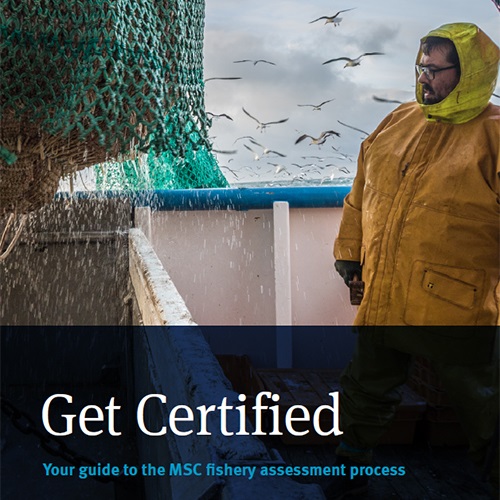Good preparation is the key to smooth certification. While assessment to MSC Fisheries Standard is carried out by accredited third-party certification bodies, we are here to help you before, during, and after the process.
Can my fishery be certified?
MSC certification is available to all wild-capture fisheries, regardless of their size, scale, ecology, geography or technology.
These include single species, multi-species, trawl, long line, hand raked, pots, freshwater, marine, inshore, offshore, demersal, pelagic and enhanced fisheries.
Which fisheries can't be certified?
Ineligible fisheries are those that:target amphibians, reptiles, birds and/or mammals |
| use destructive fishing practices (such as poison or explosives). |
| have been successfully prosecuted for forced labour violations within the last two years. |
| are conducted under a controversial unilateral exemption to an international agreement. |
| are purely aquaculture (although some forms of enhanced fishery are eligible for assessment). |
Can enhanced fisheries be certified?
Yes.
To be eligible for MSC certification, enhanced fisheries must meet criteria based on:
- the link to and maintenance of a wild stock
- how the fish are fed and looked after
- the impact the enhanced fishery has on the habitats and wider ecosystem.
Who assesses the fishery?
Assessments are conducted by accredited independent certifiers - Conformity Assessment Bodies (CABs).
Full list of CABs for MSC assessments
What are the costs?
Certification is paid for by the fishery client. The MSC does not receive payment, only the certification body you have chosen. Anecdotal information from certified fisheries suggests the cost can vary from USD $15,000 - $120,000.
The cost will depend on:
- The complexity of your fishery
- The availability of information
- The level of stakeholder involvement
We recommend that you get a few quotes and take in to account the certifier's experience with your region, gear type and species as well as the price.
What if my fishery has limited data?
Small scale and developing country fisheries may not have access to the detailed research data that underpins an MSC assessment. The MSC has developed a framework for these fisheries called the Risk Based Framework.
Can we get help to become certified?
You will need to budget to cover the cost of each key stage of MSC certification. Depending on where your fishery is located, there may be grants that you can apply for. Your local MSC representative can advise you on what is available and how to apply.
The MSC also has developed tools and technical assistance to help your fishery make the improvements required to meet the standard. An increasing number of fisheries are making the changes to become sustainable with the hope of achieving certification. This has led to considerable growth in organised efforts to improve fisheries, often called Fishery Improvement Projects (FIPs).
What are the stages of MSC certification?
How are fisheries scored?
Fisheries are scored against the three principles of the MSC Fisheries Standard

There are 28 performance indicators that sit under the three principles of the MSC Fisheries Standard.
Your fishery will be assigned a score for each performance indicator, where 60 is the minimum acceptable performance, 80 is global best practice and 100 is near perfect performance.
To become certified, your fishery must score:
- At least 60 for each of the 28 performance indicators
- An average score of 80 across all performance indicators under each of the three principles
- If your fishery scores between 60 and 79 for any performance indicator, you will be required to take appropriate action as a condition of certification. This action needs to improve the performance of your fishery so that it scores 80 or above for that indicator. The timeframe to make these improvements is typically five years or less.

What happens after certification?
You will join a collective of over 300 engaged fisheries, supplying the world with over 25,000 sustainable seafood products.
Your certifier is required to carry out audits every year of the five-year certification period. Audits will examine any significant changes that might have occurred either in the physical environment or in the management of the fishery.
Some fisheries may be eligible for subsidised second (and subsequent) recertification.
| Description: | Outline of the Marine Stewardship Council policy on subsidised assessments for certified fisheries. |
|---|---|
| Language: | English |
| Date of issue: | 01 June 2015 |
The MSC Fisheries Standard explained
Promoting your certified sustainable seafood
Now your fishery is certified, your clients may wish to also consider getting Chain of Custody certified so your catch can carry the blue MSC label.The MSC Chain of Custody Standard gives assurance that products bearing the blue MSC label can be traced to an MSC certified fishery.
Ready for the next step?

Download our guide
Get Certified! Your practical guide to the MSC fishery assessment process (PDF 19KB)

Contact your local MSC fisheries representative
We have colleagues based in offices around the world to guide you through the process of getting your fishery certified to the MSC Fisheries Standard.

